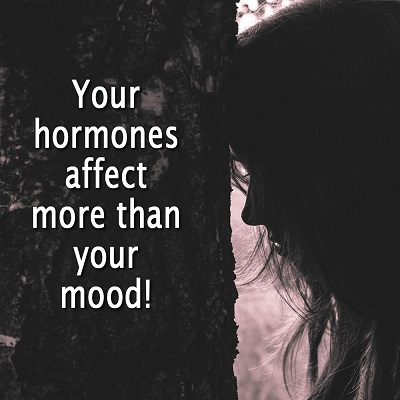 The body is fascinating, especially when we think of all the processes happening inside, that we don’t even know about or consciously control. You possibly know that you have hormones that can affect your mood, but there are many different hormones that trigger different and specific functions in the body.
The body is fascinating, especially when we think of all the processes happening inside, that we don’t even know about or consciously control. You possibly know that you have hormones that can affect your mood, but there are many different hormones that trigger different and specific functions in the body.
Let’s take a look at the endocrine glands and the hormones they produce.
Understanding the Endocrine System
We always talk about hormones, but we don’t usually mention the glands that produce them. Simply put, we have various glands scattered in different parts of the body. Most of them produce hormones, while others perform other functions beyond that. These glands and hormones are what make up the endocrine system.
Glands produce and secrete different chemicals called hormones, and each hormone has a specific purpose in helping the body function properly.
The Purpose of the Endocrine System
The endocrine system plays a vital role in the growth of the body, sexual development, metabolism, the internal balance or homeostasis, respiration, reproduction, and response to stress and other stimuli like an injury. It’s also what controls the release of the hormones to your bloodstream and influences your sensory perception.
What Makes Up the Endocrine System
The endocrine system is made up of the following glands:
- Hypothalamus
- Pituitary
- Parathyroid
- Pancreas
- Thyroid
- Adrenal
- Pineal
- Ovaries
- Testes
Hypothalamus
The hypothalamus is found in the brain and is what maintains the body’s homeostasis (internal balance) and links the endocrine system with the nervous system. It tells your pituitary gland when to start or stop releasing hormones.
The hypothalamus is responsible for the following functions:
- Body temperature
- Appetite
- Thirst
- Sex drive
- Heart rate
- Blood pressure
- Sleep cycles
- Moods
Pituitary
The pituitary gland is also located in the brain and is known as the “master gland.” That’s because it has control over the other glands in the endocrine system, stimulating or inhibiting their hormone production. It also produces hormones that affect growth and reproduction.
The hormones from the pituitary gland include oxytocin, prolactin, adrenocorticotropic hormone, follicle-stimulating hormone, growth hormone, luteinizing hormone, and anti-diuretic hormone.
Parathyroid
Four parathyroid glands are located at the back of your neck. They produce parathyroid hormones (PTH) that help regulate the amount of calcium in the body, keeping the bones healthy. Calcium is also essential for muscle contractions and electrical currents conduction between nerves. Parathyroid also controls phosphorus levels.
Pancreas
The pancreas is found within the abdomen, and it’s responsible for regulating your blood sugar. It balances blood sugar and salt levels in the body. It also excretes digestive enzymes that help break down the food that you eat.
The pancreas produces insulin, gastrin, glucagon, somatostatin, and vasoactive intestinal peptide (VIP).
Thyroid
The thyroid gland is located in the neck, just in front of the trachea. It produces T3 (tri-iodothyronine) and T4 (thyroxine) hormones. It controls your metabolism and regulates your heart rate. It affects your body’s ability to burn calories, drive your weight gain or loss, and cause either constipation or diarrhea. The thyroid is also crucial for your general health.
Adrenal
You have two adrenal glands that can be found at the top of your kidneys. They produce adrenaline, which helps your body in times of extreme stress. Besides that, adrenals also affect your metabolism, sexual function, blood pressure, and heart rate.
The adrenal glands also produce cortisol, aldosterone, corticosterone, noradrenaline, and corticosteroid hormones.
Pineal
The pineal gland is located deep in the center of the brain. It produces melatonin, which is responsible for maintaining your circadian rhythm. It also affects your reproduction and physiologic cycles.
Thymus
The thymus gland is located between your lungs, just behind the sternum, but it begins to shrink and atrophy after puberty. It’s crucial to a child’s development and immune system because it produces thymosin hormones and white blood cells called T-lymphocytes.
Ovaries
The ovaries are found on each side of the uterus and produce estrogen and progesterone. They drive the health and function of the female reproductive system. They affect fertility, menstrual cycle, and breast development.
Testes
The testes are oval-shaped organs found inside the scrotum or the loose pouch of skin hanging below the penis. They produce sperm and also the hormone testosterone, which is responsible for male physical development during puberty. Testosterone is essential for maintaining libido, strengthening the muscles and maintaining their mass, and promoting bone health.
To summarize, the endocrine system is an essential network of glands in the body. These glands produce hormones that are crucial for the body to function properly. These hormones control various processes in the body, from your mood to your digestion to reproduction and immune response.






